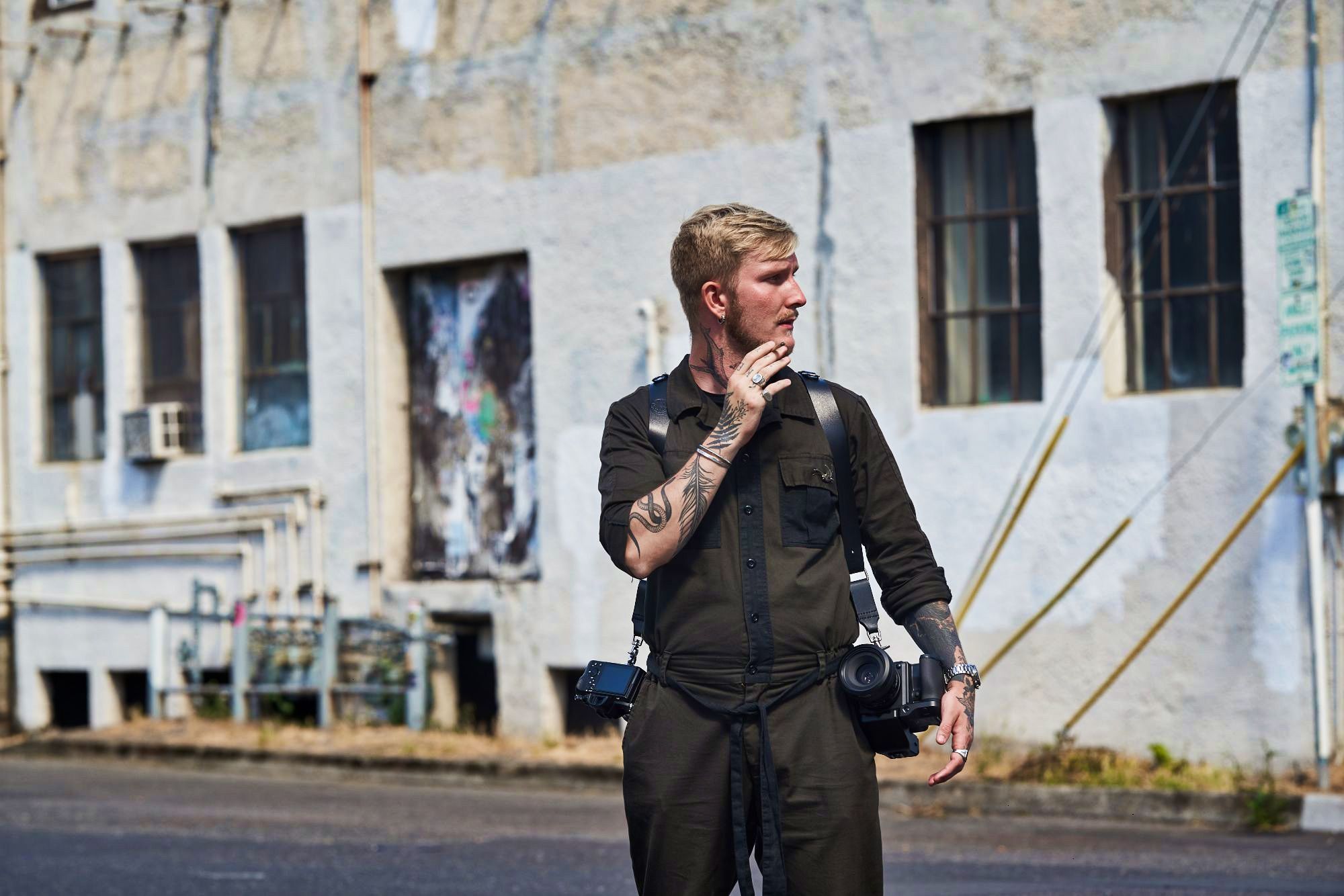Years ago, when I was in my teens, I used to get up early and go out with my camera to look for pictures. I didn’t realize it then, but I was taking a photo walk or what I like to call a photo safari. You know… because I was hunting for pictures.
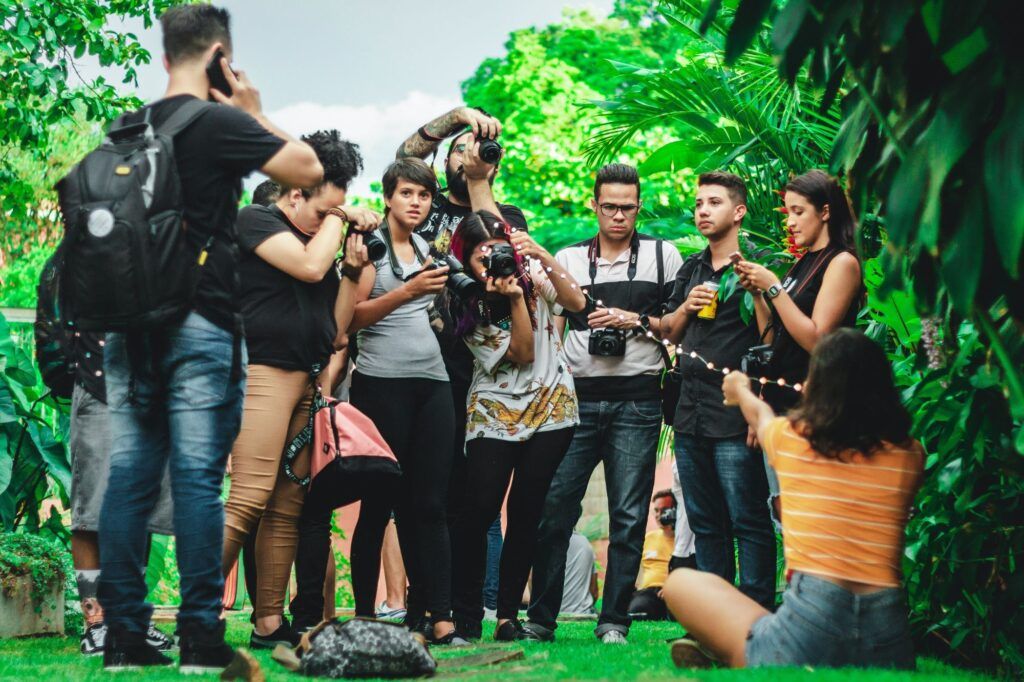
Recently, photographers have added to the photo walk concept. They will gather in groups and walk together while everyone takes pictures. Generally, these photo walks have a theme that the entire group finds interesting.
What I want to share with you today can be applied to either style of a photo walk.
Here is what we will discuss today:
- Always remember to look behind you while walking.
- How dramatically the light can change when looking in a different direction.
- There are often exciting things happening above you.
- There is another entirely different universe down by your feet.
- When photographing in groups, look where no one else is looking.
Recommended Reading: Want to expand your shooting skills and master photography? Grab our set of 65 beautifully designed and printable Action Cards that will give you over 200 photography assignments to help you take your photography to the next level. Check it out here.
Looking Behind You
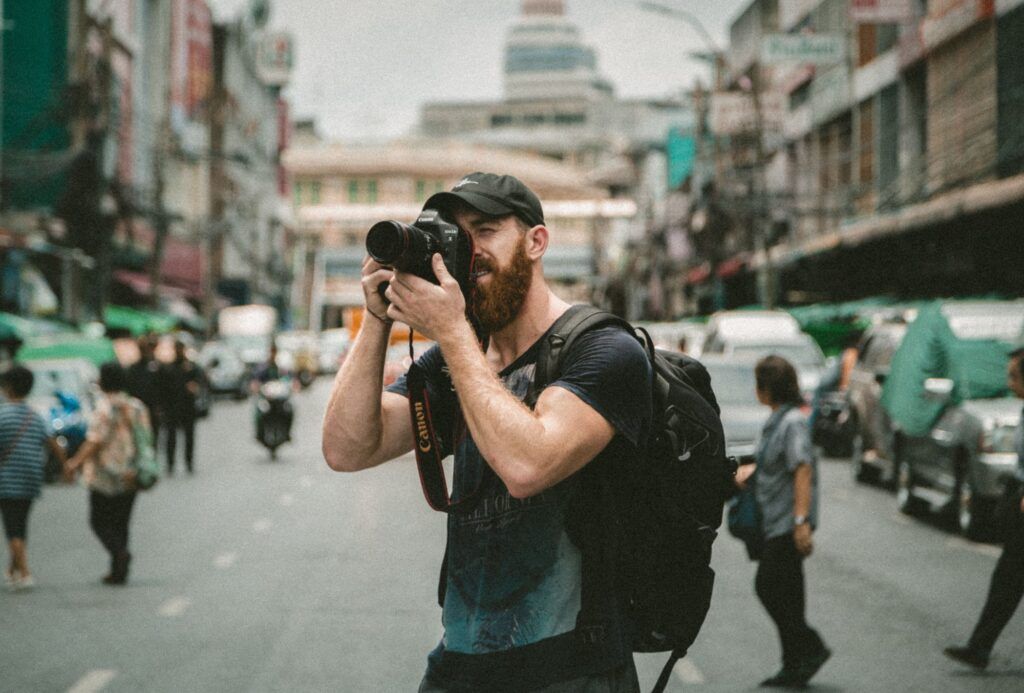
Always look behind you. This advice was given to me by a mentor photographer many years ago.
It seems so simple, and yet I rarely see photographers doing this. After I was given this advice, I started paying attention to what other photogs were doing when there was a bunch of us gathered together, such as at a monument or a famous national park. I would see them walking along, camera in hand, looking straight ahead or perhaps off to the side but still ahead of them.
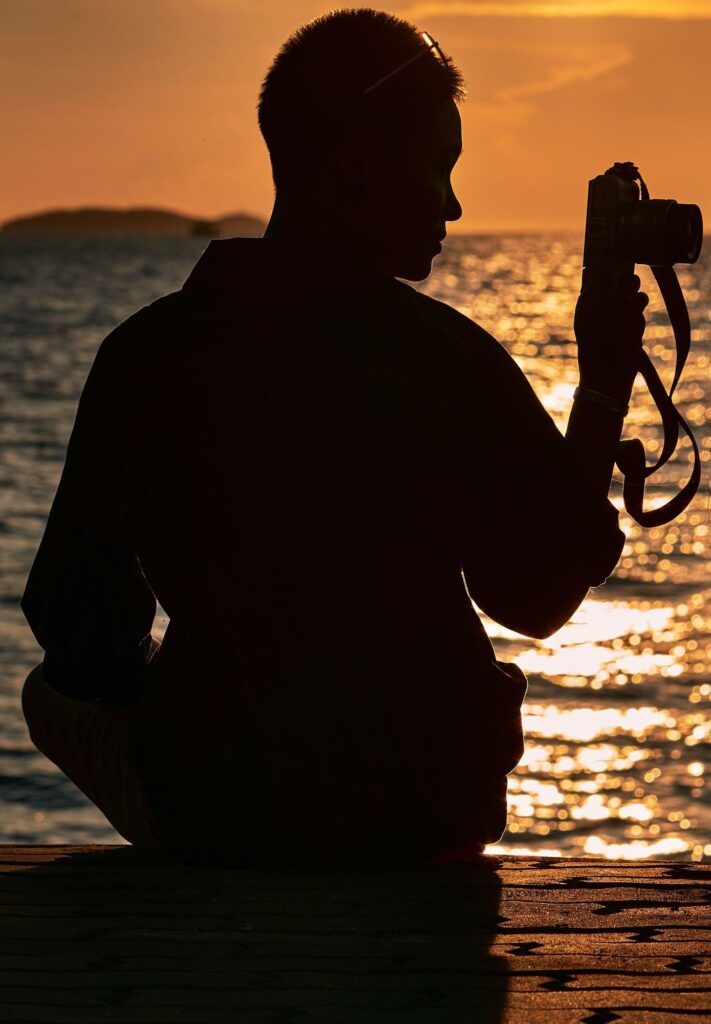
Think about how limiting it is to only view what’s in front of you! There are 180 degrees of life happening behind you.
Key Lesson: When taking a photo walk, there is as much happening behind you as in front of you. Make it a habit to spin around and take in the entire area every few minutes or so.
Changing the Camera POV Changes the Light

For many years, I worked as a portrait beach photographer for a company specializing in that work.
Virtually all of our photo shoots were booked for sunrise or sunset. During this experience, I became acutely aware of how the lighting can change drastically by merely pointing the camera in one direction or the other.
The image above shows an example of lighting at sunset. But what happens if the camera is turned in a different direction?
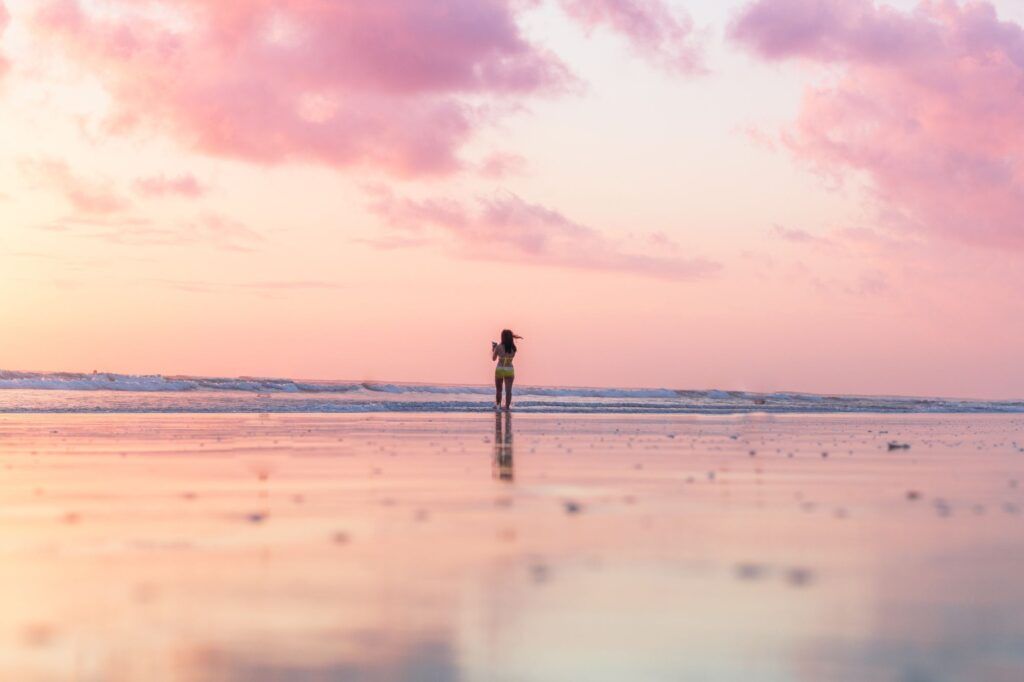
The same sunset that produced the previous image could also create the image above. Each is gorgeous in its own right.
Key Lesson: Be aware of how the existing light changes with a new camera position while on a photo walk. The lighting might be dull in one direction and quite exciting in another.
Look Up – There’s an Entirely Different World up There
Back in the 1980s, when I started selling stock photography through several agencies, one of my best-selling images was a lone window washer on a skyscraper in downtown Atlanta.

We tend to see the world from our point of view, which is eye level. But when you look up, there is an entirely different world up there. It’s a world that is fascinating and fraught with exciting images.

I’m not sure who was the first photographer to take this style of airline picture, but whoever it was, I am most certain they were well rewarded for their effort of looking up.

But even a simplistic overhead photo such as the image above can take on an artistic and moving composition.
Key Lesson: Remember that you are used to seeing the world from your standing point of view. When you are on a photo walk, practice the art of constantly changing your POV. Look up, because what’s up there is missed by 90% of the population, and that equates to exciting images, even for something as mundane as an airplane in flight.
Look up, because what’s up there is missed by 90% of the population, and that equates to exciting images, even for something as mundane as an airplane in flight.
Recommended Reading: Want to expand your shooting skills and master photography? Grab our set of 65 beautifully designed and printable Action Cards that will give you over 200 photography assignments to help you take your photography to the next level. Check it out here.
Things Are Happening Down by Your Feet
Looking downward with my camera didn’t come naturally to me. I’m not into macro photography, photographing bugs and flowers, and things like that.
My personal style tends to go in the direction of fine art or semi-abstract. Guess what? There are plenty of those types of shots down by our feet as well.
I created a few shots on photo walks by simply looking down.

Looking down from the second floor at the local shopping mall. Photograph by Kent DuFault

Grass at a nearby park. Photograph by Kent DuFault
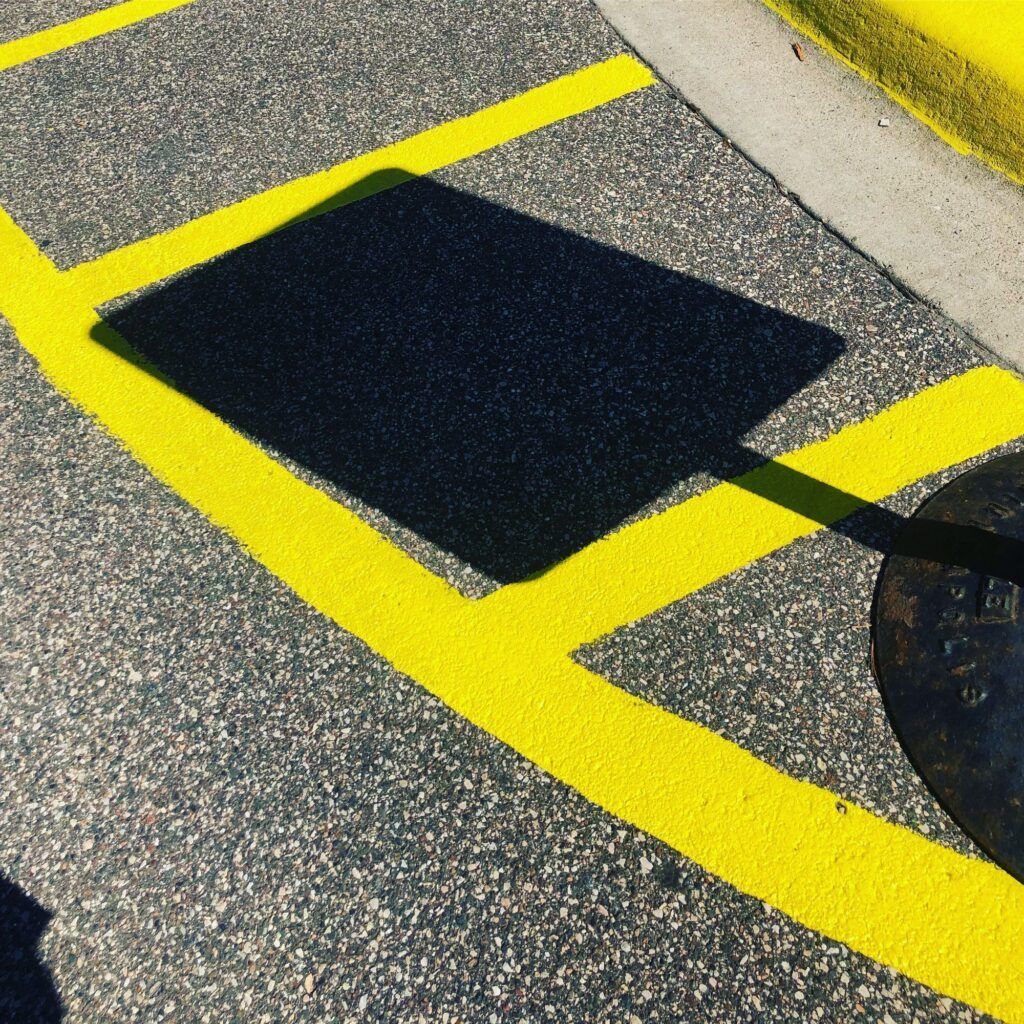
Outside of a parking lot in a nearby large city. Photograph by Kent DuFault
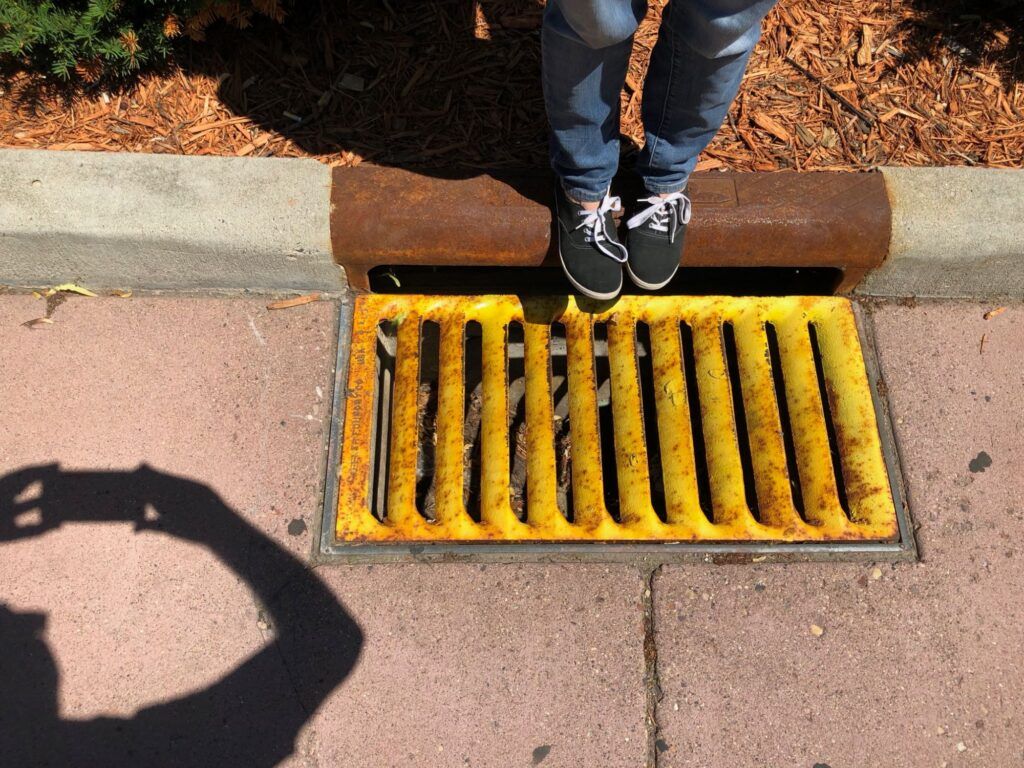
A couple taking pictures at a park. Photograph by Kent DuFault
Key Lesson: Looking downward offers a fresh perspective on everyday things. Don’t forget to look down while on your photo walks.
When Photographing in Groups, Look Where No One Else Is Looking
I learned this lesson a long time ago.
I have an incessant need to be creative and highly individualistic. I don’t want to come away with the same picture that everyone else gets. This is especially true when on a group photo walk.
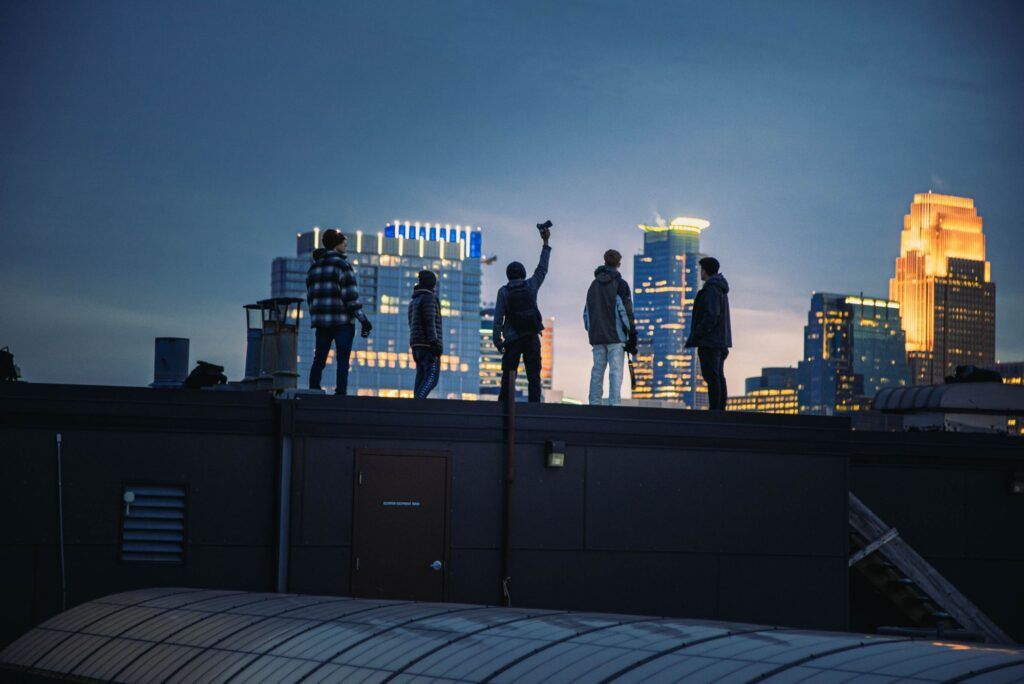
If everyone is looking over here, I’m looking over there. If everyone is looking up, I’m looking down. You get the idea.
Here are two of my favorite moments where I was surrounded by photographers, and I know I’m the only one who came away with these shots:
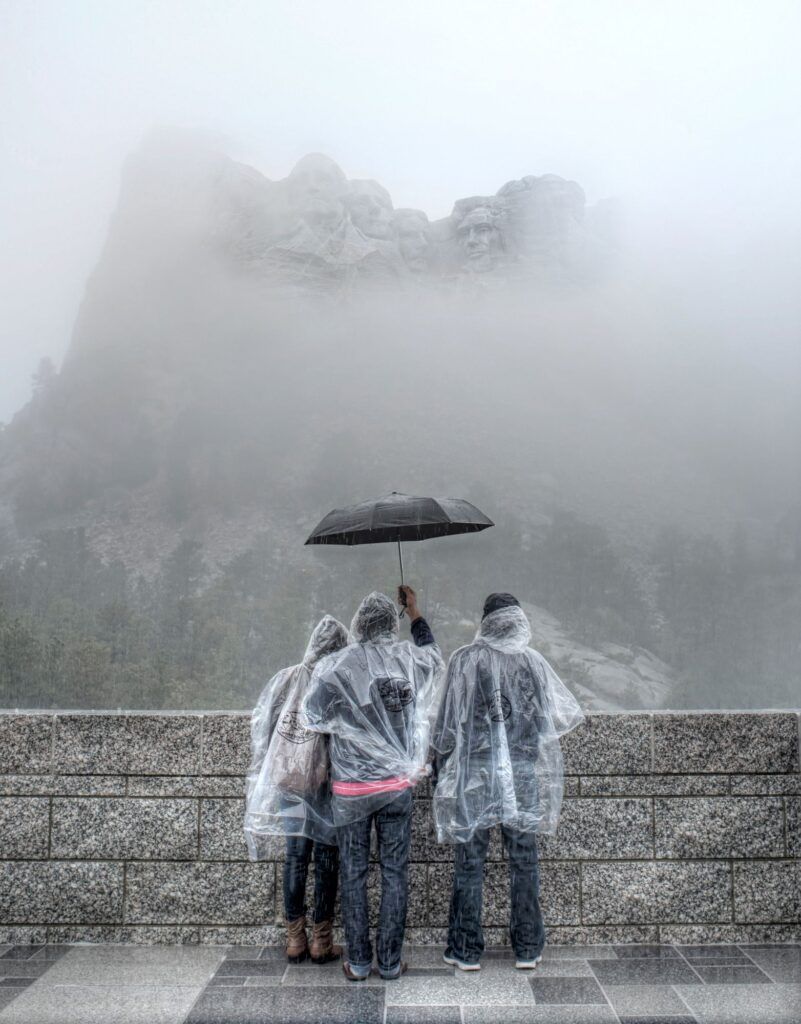
Photograph by Kent DuFault
I had traveled hundreds of miles to photograph Mount Rushmore in South Dakota, a state in the United States. I had one day to accomplish this task, and of course, it was pouring rain.
The clouds were so dense that the monument wasn’t even visible. About thirty photographers were standing near me, cameras on tripods, zoom lenses pointed up at the mountain, when I noticed this group of tourists in front of me.
I took up a position directly behind them. I was intent on getting a photo of them when the clouds parted slightly and I saw the monument behind them.
I know I’m the only one that got this shot because it lasted about five seconds. I would have missed this opportunity if I hadn’t been practicing my techniques for a photo walk.
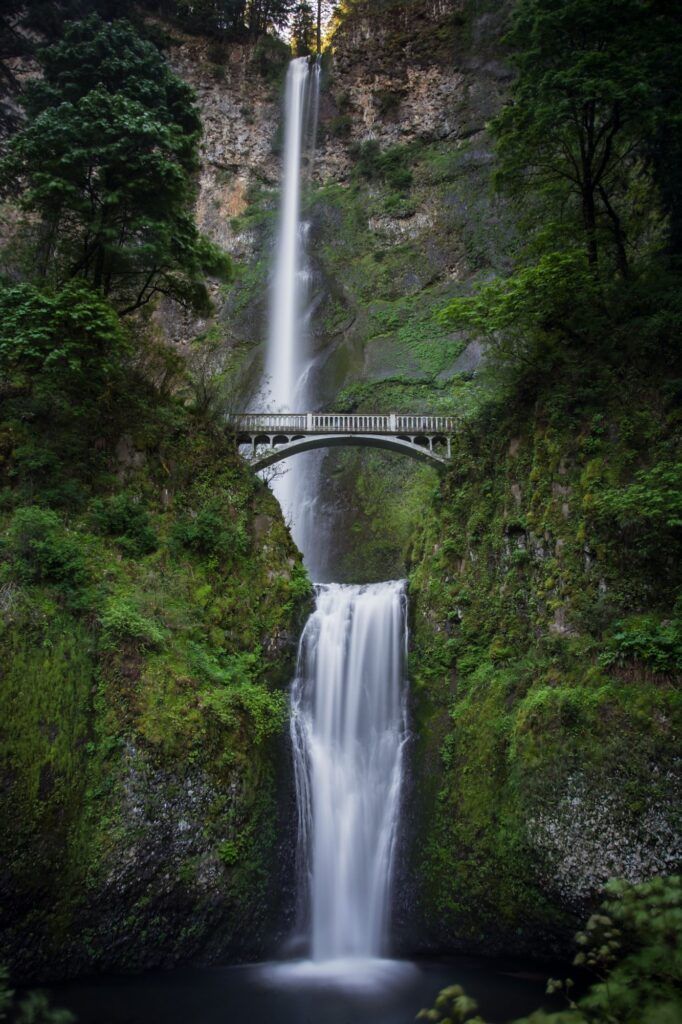
Photograph by Kent DuFault
Multnomah Falls is a famous landmark just outside Portland, Oregon. On any given day, hundreds of photographers take some variation of this shot. Google ‘Multnomah Falls’ and look at the Images tab.
I took the obligatory shot because it’s beautiful. Why wouldn’t you?
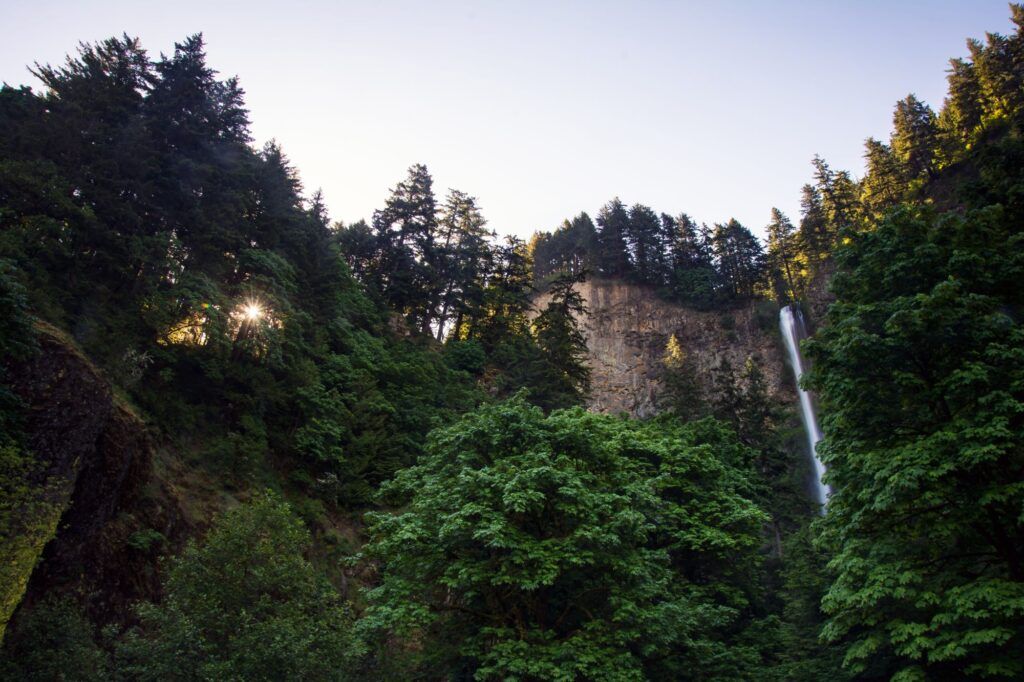
Photograph by Kent DuFault
However, I also took this shot in my photo walk quest to create new art.
Now, go back to the Google page and see how many images you come across that look like this. The last time I looked, there were none… out of hundreds of posted photos.
All of my Multnomah Falls pictures are for sale as stock images, and this one has outperformed all the rest by a pretty hefty margin. Why?
It’s different!
Key Lesson: Look where no other photographers are looking. See past the obvious first shot. Be adventurous and try new things. (By the way, I’m probably the only photographer who has taken a picture of this waterfall with an extremely wide-angle lens!)
Recommended Reading: Want to expand your shooting skills and master photography? Grab our set of 65 beautifully designed and printable Action Cards that will give you over 200 photography assignments to help you take your photography to the next level. Check it out here.
Conclusion
Photo walks are a fantastic avenue to help you gather new and exciting work. Be sure to get out of tunnel vision mode and explore the entire landscape around you and above and below you. Watch how the light and shadows change as you look in different directions. If there are other photographers around, check out what they are looking at and then look elsewhere.

Self-Check Quiz:
- What are the two different types of photo walks?
- Why is the term ‘photo safari’ perhaps more fitting when out by yourself?
- Why do most photographers suffer from tunnel vision?
- Name three places you should always be looking when on a photo walk.
- True or False: Even the slightest change in camera position can completely alter the lighting.
- If every other photographer is looking off to the right, where should you look?


